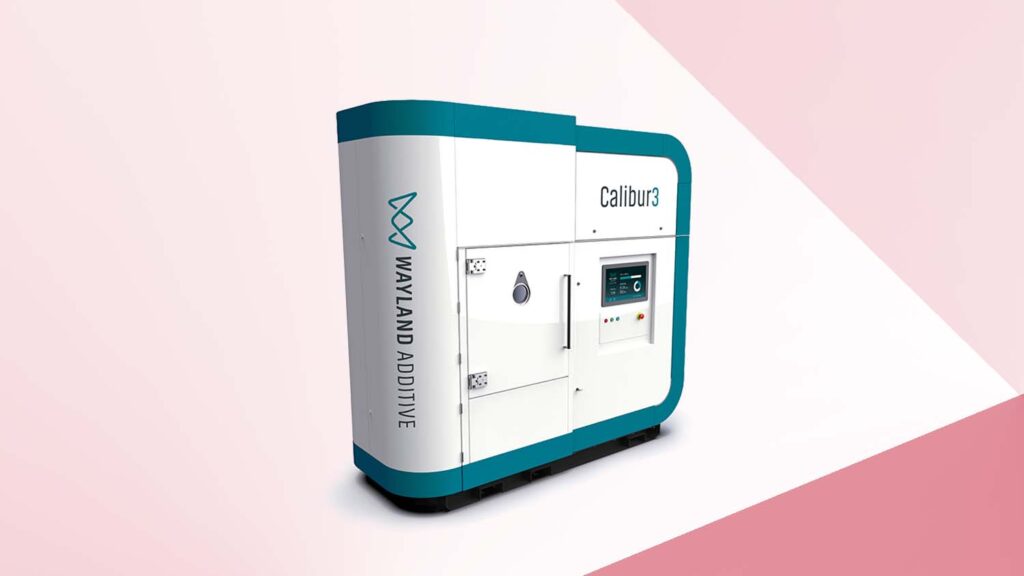UK 3D Printing start-up Wayland Additive has spoken about its NeuBeam melt pool strategy for metals additive manufacturing, which it claims as a ‘big step forward’ on existing SLS technologies.
The proprietary NeuBeam melt strategy features on Wayland’s Calibur3 additive manufacturing system, and is billed as being a ‘completely new approach’ to eBeam powder bed fusion and claims to overcome the compromises of either laser or eBeam technologies.
Neubeam is said to neutralise the charge accumulation generated by an electron beam, which should offer greater flexibility than laser-based processes while overcoming the stability issues of eBeam methods.
According to Wayland, this means that the NeuBeam process enables metallurgical requirements to be tailored to application requirements, helping open the process up to a much wider range of metal materials.
Peter Hansford, director of business development at Wayland Additive, said: “Our new proprietary melt pool strategy uses the power and speed of an eBeam more efficiently. EBeams are characterised by their high power and high scanning speed, and at Wayland we have worked on how to best use this power and speed.
“Our system splits each layer of a part under construction into small zones, and assigns a melt pool to each zone. Our melting strategy is at the same time energy efficient, and by melting different zones in parallel, it allows higher productivity rates regardless of geometry.
“The power and beam speeds required using traditional melting strategies are incredibly geometry dependent. A common approach has been to dynamically change the energy based on key features of the geometry (overhangs, line lengths, end of line turning points) to maintain accurate geometry and material quality.”
Wayland CEO Will Richardson, added: “Our new melt strategy has numerous tangible benefits, key among which are its high productivity (20-40% savings compared to traditional eBeam systems), better consistency over multiple types of geometries, and lower investment and easier calibration when compared to multiple-laser systems
“In addition, with the Calibur3 melting strategy there is more control over the thermal history and thus microstructure of the material. The NeuBeam melting strategy also opens up the possibility of producing fully dense parts in difficult to process materials (such as refractory metals and highly reflective alloys), and of building large and bulky parts.”






